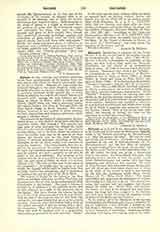
Balsam
Oily, resinous, and odorous substance, which the Church mixes with olive oil for use as chrism

Balsam, an oily, resinous, and odorous substance, which flows spontaneously or by incision from certain plants, and which the Church mixes with olive oil for use as chrism. Balsams are very widely distributed throughout the plant kingdom, being particularly abundant in the pine family, but the name is generally restricted in the present day to resins which in addition to a volatile oil contain benzoic and cinnamic acid. Among the true balsams are the Balm of Gilead, or Mecca, which is cultivated in Arabia, Egypt, Syria, etc., and is extremely costly; the copaiva balsam, and those of Peru and Tolu—all three found chiefly in South America. The term balsam, however, is also applied to many pharmaceutical preparations and resinous substances which possess a balsamic odor.
The practice of the Church of using balsam, as mentioned above, is very ancient, going back possibly to Apostolic times. (See Chrism.) The scarcity and high price of other perfumes has obliged the Latin Church to be content with balm alone in the mixture of holy chrism; but in the East, where the climate is more favorable than ours to the growth of these plants, the Church uses no less than thirty-six species of precious perfumes, according to the Euchologion, in the oil, which makes it an ointment of exquisite fragrance. The Latin Church does not insist on the quantity or the quality of the balsam to be used; any substance commonly known as a balsam may be utilized, and such a quantity as will give its odor to the oil is sufficient. This mingling of the balsam with the oil is intended to convey, by outward sign, the good odor of Christ, of whom it is written (Cantic., i, 3): “We will run after thee to the odor of thy ointments.” It typifies also the odor of good works, the thought which ought to inspire those who worthily receive the sacraments; and it symbolizes an innocent life and the gifts of the Holy Spirit.
The balsam is blessed by the bishop at the Mass which he solemnly celebrates on Holy Thursday and is poured into the oil after he has administered Holy Communion to the faithful. The cruet of balsam is brought by a subdeacon to the assistant priest, who in turn places it on a table in the sanctuary before the bishop. The latter blesses the balsam, reciting over it the three prayers found in the Roman Pontifical: he calls it the fragrant tear of dry bark—the oozing of a favored branch that gives us the priestly unction. Later he mixes the balsam with a little oil on a paten and pours it into the chrism with a suitable invocation: “May this mixture of liquors be to those who shall be anointed with it, a propitiation and a salutary protection for ever and ever. Amen.”
In the early ages the pope, without using any form, as appears from the Roman Ordines, poured the balsam into the oil, while still in the sacristy before Mass (Ordo Romanus, X, n. 3; P.L., LXXVIII, 1010), but the blessing took place after the Communion of the pope, and before that of the clergy and the faithful (Duchesne, Christian Worship, 2d Eng. ed., 305, 306, 467). According to the Gregorian Sacramentary (Muratori, ed., P.L., LXXVIII, 330), however, the pope mixes the balsam and oil during the Mass. In the Church of Soissons in France, at one time, the “Veni Creator” was sung before the mingling of the balsam and oil.
ANDREW B. MEEHAN

